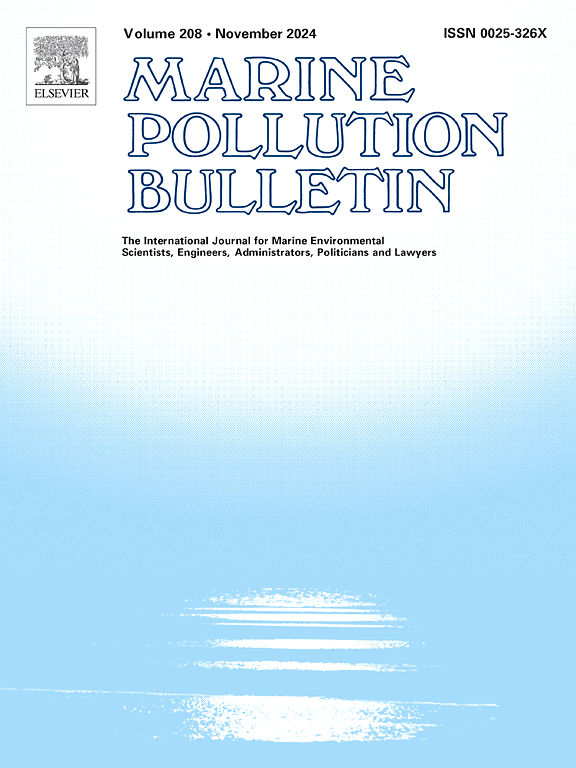Integrated macrobenthic TITAN, AMBI, and M-AMBI indices for assessment of marine ecological quality in the East China Sea
IF 5.3
3区 环境科学与生态学
Q1 ENVIRONMENTAL SCIENCES
引用次数: 0
Abstract
Macrobenthic species are effective indicators of marine environmental stress, making them valuable for ecological assessments. This study collected data on macrobenthos and environmental factors in the East China Sea (ECS) during 2019–2020. Through Threshold Indicator Taxa Analysis (TITAN), 21 indicator species were identified, with annelids being the most abundant. A critical dissolved oxygen (DO) threshold (DO <3.71 mg/L) was identified, revealing hypoxic conditions at about 10 % of sites. Depth significantly influenced species distribution, with responses clustering around 50 m. DIN and chlorophyll-a exhibited low thresholds, while TP showed a wider range. The AZTI Marine Biotic Index (AMBI) indicated slightly disturbed ecological conditions, while Multivariate AZTI's Marine Biotic Index (M-AMBI) reflected good overall quality. AMBI provided a broad baseline of ecological health through long-term community responses, while TITAN captured dynamic responses of species to localized environmental pressures. The combination of these three macrobenthic indices complemented each other's limitations, enhancing the comprehensiveness of the assessment, and the findings highlight the importance of integrating these indices to improve marine ecosystem management and provide early warning signals for environmental changes, offering valuable guidance for future conservation and restoration efforts.

求助全文
约1分钟内获得全文
求助全文
来源期刊

Marine pollution bulletin
环境科学-海洋与淡水生物学
CiteScore
10.20
自引率
15.50%
发文量
1077
审稿时长
68 days
期刊介绍:
Marine Pollution Bulletin is concerned with the rational use of maritime and marine resources in estuaries, the seas and oceans, as well as with documenting marine pollution and introducing new forms of measurement and analysis. A wide range of topics are discussed as news, comment, reviews and research reports, not only on effluent disposal and pollution control, but also on the management, economic aspects and protection of the marine environment in general.
 求助内容:
求助内容: 应助结果提醒方式:
应助结果提醒方式:


